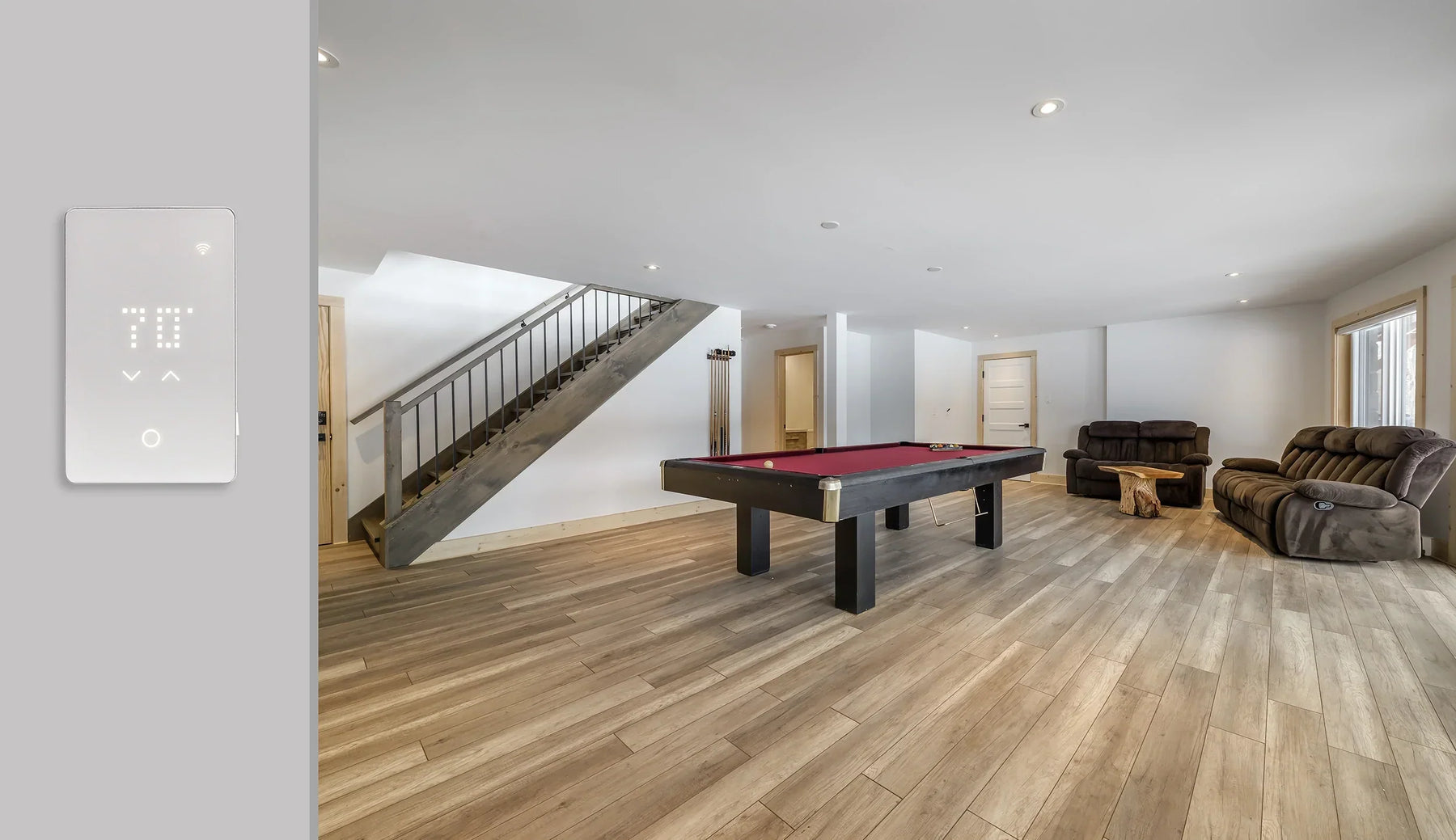
(502) 783-7995
(502) 783-7995


Many basements are built without a dedicated heating system, leaving homeowners to wrestle with chilly floors and damp air long after the rest of the house feels cozy. Years later, the big question becomes: how do you heat a basement that was never designed for it? The good news is that there are several approaches, from quick fixes to long-term investments. In this guide, we’ll cover five of the best ways to heat your basement, finishing with the solution that transforms the space completely, radiant floor heating.
Basements lose heat faster than other rooms because they’re in direct contact with the cold ground. Add limited natural light, lower ceilings, and often minimal insulation, and you’ve got a recipe for chilly evenings. Any heating solution you choose needs to overcome those factors while still being efficient and practical for your space.
Electric baseboard heaters are straightforward to install along basement walls and can provide steady heat for small or medium-sized rooms. They’re a good option when you want supplemental warmth, but they take up valuable wall space and may leave cool areas far from the units.
Portable infrared heaters are a fast, budget-friendly choice. They radiate heat directly to people and objects in front of them, making them useful for spot heating a workspace or seating area. The trade-off is limited coverage; they won’t keep a large or open basement consistently warm.
A ductless mini-split heat pump is a bigger investment but offers year-round heating and cooling in one system. It’s ideal if your basement is finished and used daily. The upfront cost is higher than portable heaters or baseboards, but mini-splits are efficient and can lower long-term running costs. The main drawback is visible wall units and the need for professional installation.
While insulation doesn’t generate heat on its own, it dramatically improves any system you choose. Sealing cracks, insulating walls, and adding insulated underlayment beneath new flooring all reduce heat loss. Pairing good insulation with an efficient heating method ensures more of the warmth stays inside your basement instead of disappearing into the ground.
Finally, the ultimate solution for a cold basement: radiant floor heating. Unlike other methods that heat the air or occupy wall space, radiant floors deliver gentle, even warmth directly from the ground up. That means no cold spots, no noisy fans, and no bulky equipment intruding on your layout. Once installed, it’s silent, hidden, and highly efficient.
ProLux offers two tailored options for basements. Floor heating mats roll out quickly and are ideal for open, rectangular layouts. Floor heating cables give you custom spacing for tricky layouts with alcoves or obstacles. Both integrate under common basement flooring types like tile, vinyl, or engineered wood.
Accurate measurements keep projects on budget and ensure full coverage. The video below walks you through how to measure properly before you start:
Watch: Step-by-step guide to measuring your basement floor for ProLux radiant heating.
With the right preparation, radiant floor heating is surprisingly straightforward to install. Whether you choose mats or cables, ProLux provides guides, resources, and video walkthroughs to simplify the process.
Video: See how a Floor Heating Mat system is installed from start to finish.
Video: Learn how cables are set with an uncoupling membrane for durable coverage.
Basements are notoriously difficult to heat, but radiant floors solve that challenge completely. ProLux designs heating mats and cables to deliver consistent warmth underfoot, reduce heat loss, and work with a variety of finishes. With proper insulation and a smart thermostat, you can enjoy a basement that’s just as comfortable as any other room.
You don’t have to keep your basement as a cold, unused space. From portable heaters to mini-splits, there are multiple ways to add warmth. But for the most consistent, comfortable, and long-lasting results, ProLux radiant floor heating is the solution that truly transforms your basement into a welcoming part of your home.
Explore our ProLux radiant basement heating systems today and start planning a basement that’s as cozy as your living room.

Our under floor heating experts will work on the design and layout of your project, for free!